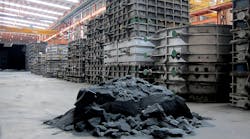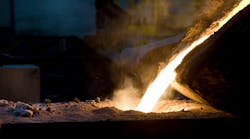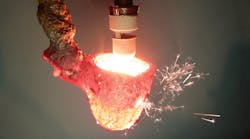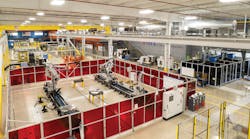The federal Occupational Safety and Health Administration (OSHA) announced recently that it will begin to enforce its final rule on occupational exposure to beryllium in general industrial workplaces, construction sites, and shipyards on May 11, 2018. Previously, the enforcement had been scheduled to begin on March 12.
The agency indicated its two-month notification of the pending standard would ensure “that stakeholders are aware of their obligations, and that OSHA provides consistent instructions to its inspectors."
The U.S. Occupational Safety and Health Act of 1970 requires employers to provide “safe and healthful workplaces” for their employees. OSHA’s role is to ensure these conditions by setting and enforcing standards, and providing training, education, and assistance.
Beryllium is a metal noted for its lightweight and exceptional stiffness. It’s used as specialty alloy (particularly with aluminum) to produce high-value investment castings, particularly for aerospace and defense programs. It’s also used to produce beryllium-oxide ceramics.
But, beryllium presents two risks of toxic exposure: first via soluble beryllium salts, which may occur via exposure to the elemental or refined forms of the metal; and second, via long-term exposure to beryllium oxide, usually by inhalation.
In January 2017 OSHA issued a final rule establishing new protections for workers who are exposed to beryllium in general industry, construction, and shipyards. That rule would reduce the eight-hour permissible exposure limit from the previous level of 2.0 micrograms/m3 to 0.2 micrograms/m3. Above that level, employers must take steps to reduce the airborne concentration of beryllium. The rule requires additional protections, including personal protective equipment, medical exams, other medical surveillance and training. It also establishes a short-term exposure limit of 2.0 micrograms/m3 over a 15-min. sampling period.
The agency previously has estimated that, once in full effect, its new rule will save 94 lives annually and prevent 46 new cases of beryllium-related disease. Workers in foundries, fabricating, machining and grinding operations where beryllium metal and alloys are processed; or those working with beryllium-oxide ceramics; and dental lab workers represent most of those at risk of exposure.
OSHA stated that, in response to feedback from stakeholders, it is considering technical updates to the January 2017 general industry standard, which will clarify and simplify compliance with requirements.
Also, on May 11, OSHA will begin enforcing a new, lower 8-hour permissible exposure limit (PEL) and short-term (15-minute) exposure limit (STEL) for construction and shipyard industries. In the interim, if an employer fails to meet the new PEL or STEL, OSHA will inform the employer of the exposure levels and offer assistance to assure understanding and compliance.









